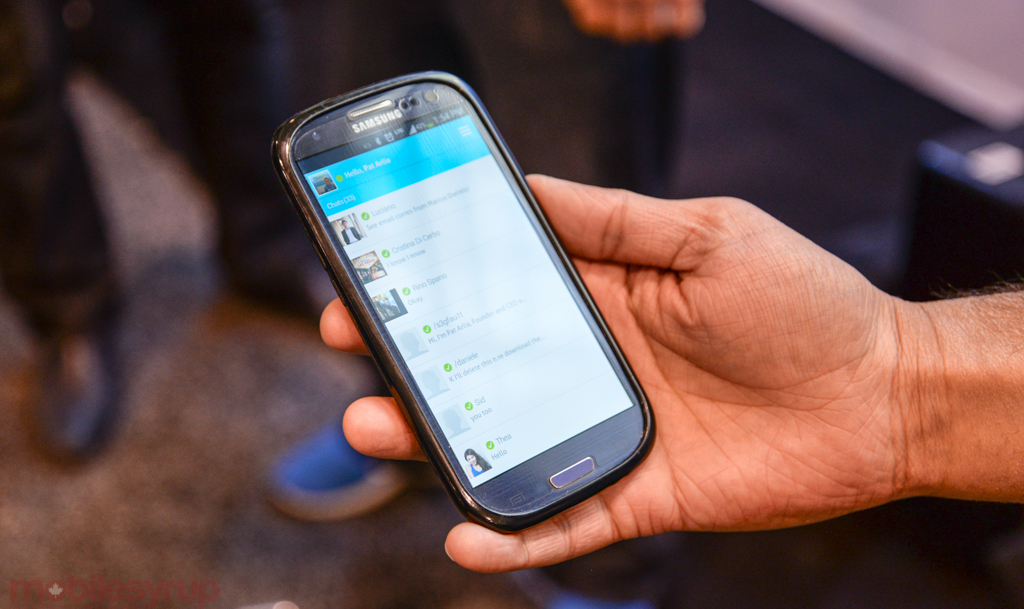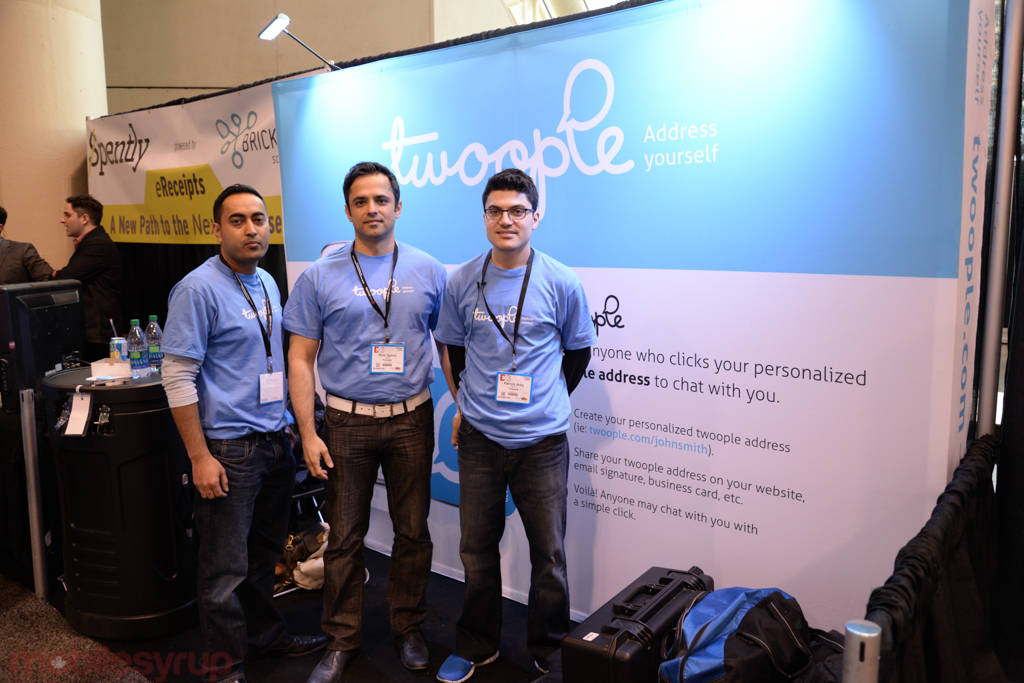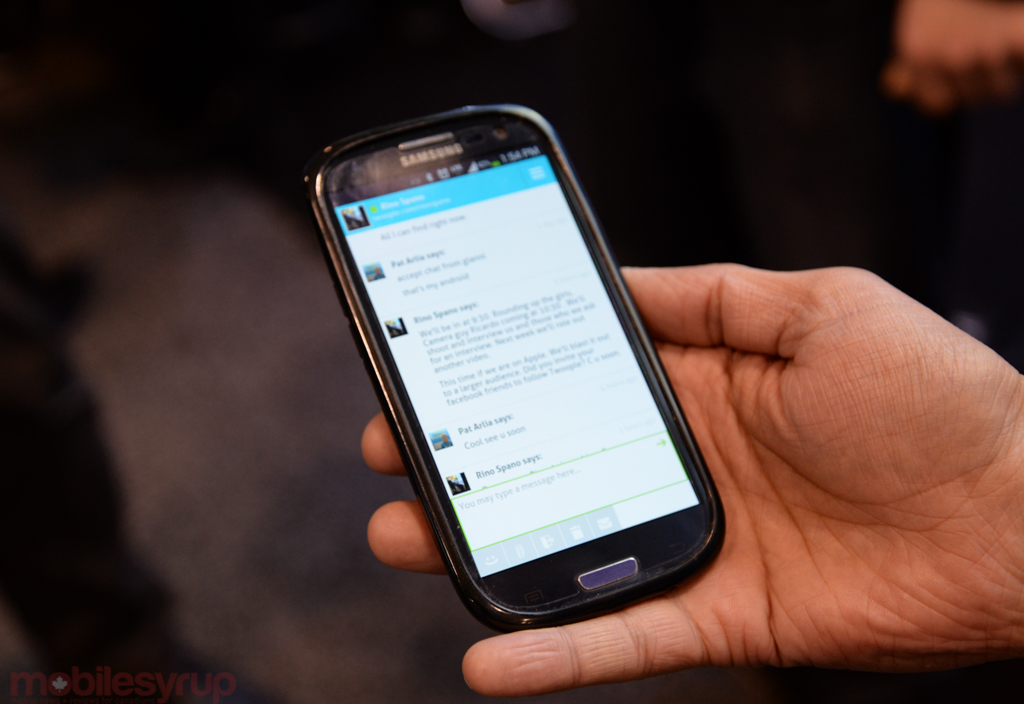
There are a lot of messaging apps. You know it, we know, and the team at Twoople knows it.
And yet the Toronto-based startup, debuting its app and web-based service at Dx3 this week, thinks there’s plenty of room to grow and become successful. While the core messaging features are similar to many others out there, the way users get in touch with one another is unique, and potentially valuable to businesses, brands and individuals.

Every Twoople (pronounced “two-pull”) user gets a unique web address, www.twoople.com/yournamehere, which becomes both a username and a destination. Users interact not by sharing a phone number or BBM Pin, but through that unique destination, behind which one can fashion a profile with as much or as little personal information as possible.
The benefit from this comes when one is looking to keep a distance from those potentially getting in contact. Because it’s possible for anyone to navigate to that web address and send a message, the first “transaction” is more like a contact form than an intimate messenger. The receiver, that Twoople user, then has the choice of responding, opening up a line of communication that can continue on the web, or on mobile.

Twoople is set up to allow a single chat instance at a time; the Android or iOS app acts as conduits for new and existing conversations, which are brought over from the web, or vice versa. Pat Arlia, one of four co-founders of the bootstrapped startup, says Twoople is an ideal platform not just for individuals, but businesses looking to handle customer requests easily, without the public nature of Twitter or Facebook, and without the conversation-unfriendly format of email.
After demoing the product, I agree: Twoople seems primed for small to medium businesses looking to communicate with customers on a one-to-one basis, in a workflow that is not only mobile, but extremely extensible.
Because a submitter doesn’t necessarily need to be a Twoople user — once they submit an initial chat “request” on the web, the conversation continues until its natural end. If the two users want to continue talking, he or she without an account must create one, which can then be shared with others.
While only the Android app is publicly available — the iPhone version is being reviewed by Apple — I had a chance to use both versions briefly, and found the interface to be clean, responsive and intuitive. Users can post emoji or share photos, and it’s possible to quickly email a chat to a personal address for later perusal. I noticed some slowdown on the Android version, but Arlia promises the team is working very hard on fixing performance issues, killing bugs and adding features.
The company also calls Twoople a “universal” app, because it is neither constrained to a smartphone, nor limited by the half-duplex nature of email. If it catches on, which I hope it does, Twoople stands to be the go-between among businesses and their customers, or individuals looking to stay as anonymous as they wish to be. Transmissions are encrypted end-to-end, so Twoople promises messages are safe, and there are many improvements in the pipe.
MobileSyrup may earn a commission from purchases made via our links, which helps fund the journalism we provide free on our website. These links do not influence our editorial content. Support us here.



